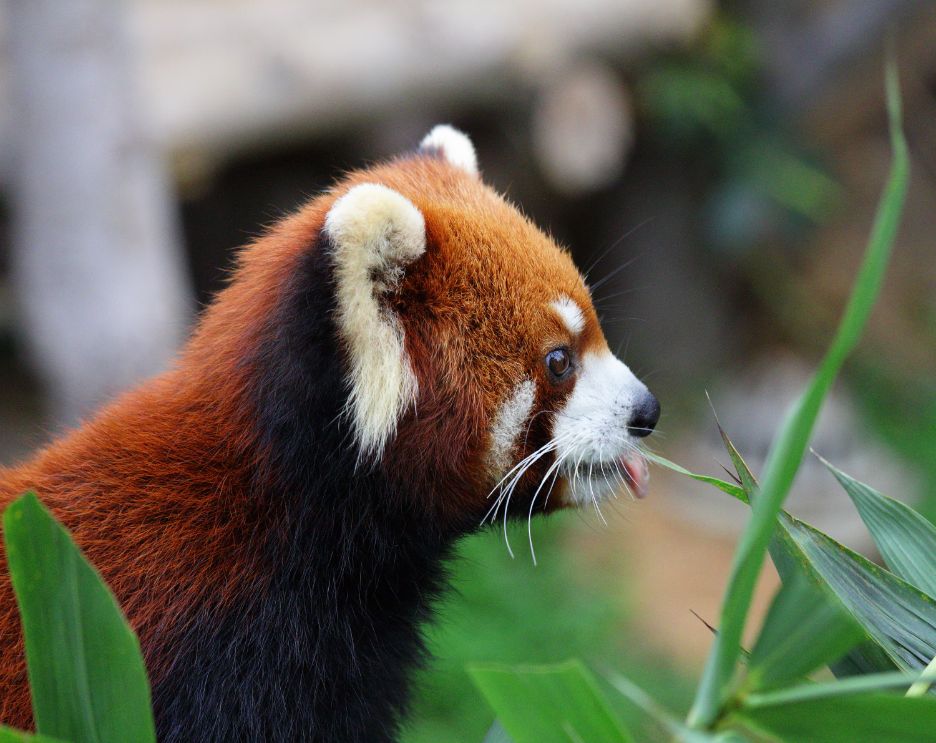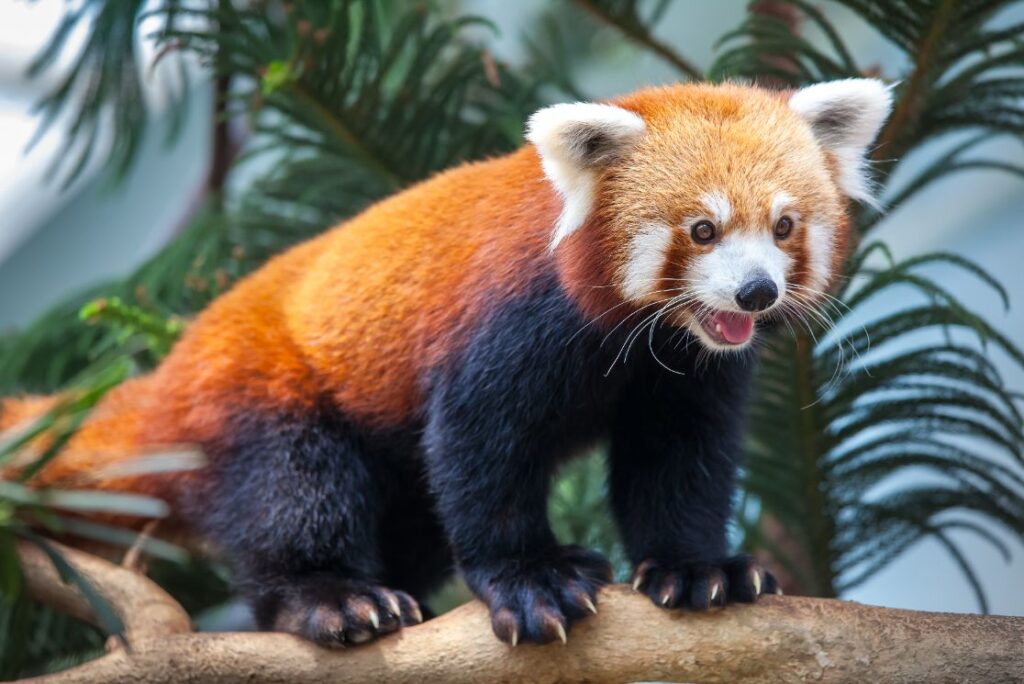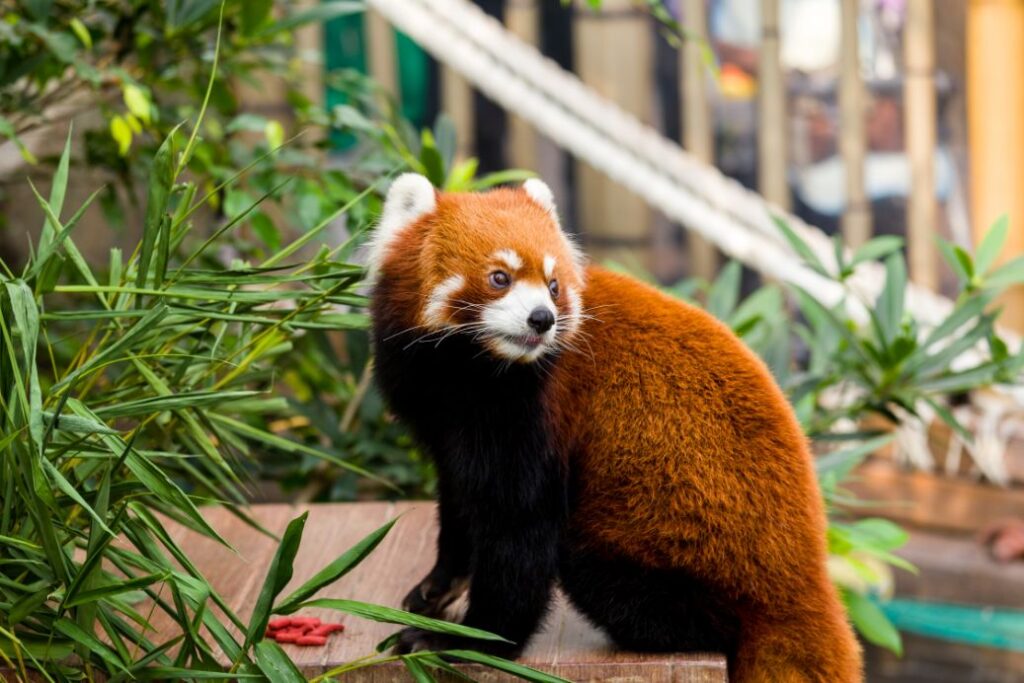Table of Contents
The red panda is one of the most fascinating animals. Like the giant pandas, these adorable mammals are native to Asia. They’re also among the world’s critically endangered species, an unfortunate situation partly attributable to their restricted diets.
This post delves deeper into what a red panda’s primary diet constitutes.
What Do Red Pandas Eat?
All panda varieties, including the red panda, are primarily bamboo eaters. These animals feed almost exclusively on bamboo shoots. However, they may also snack on other parts of the bamboo plant, including the stem and twigs.
But as you shall find, bamboo isn’t the red panda’s only diet. And neither are these mammals true herbivores as most people believe.
More About Red Pandas
The red panda is a small mammal native to southwestern China and the eastern Himalayas. The animal is also known as the lesser panda, ostensibly to distinguish itself from the more popular giant panda and with whom it’s surprisingly unrelated.
Red pandas were officially recognized as a distinct species in 1825. They’re further split into two subspecies, namely the Chinese Red Panda and the Himalayan Red Panda.
Scientific Classification
- Kingdom: Animalia
- Phylum: Chordata
- Class: Mammalia
- Order: Carnivora
- Family: Ailuridae
- Genus: Ailurus
- Species: Ailurus fulgens
- Subspecies: Ailurus fulgens fulgens and Ailurus fulgens styani
Physical Features
The red panda gets its name from its reddish-brown fur. However, the animal’s entire body isn’t reddish-brown. Their bellies and legs tend to be black while their ears usually feature white stripes. Their muzzles are mostly white whereas their tails are ringed.
Mature red pandas measure 20.1 – 25.0 inches (51 – 63.6 centimeters) from head to body and weigh 7.1 – 33.1 pounds (3.2 – 15 kilograms). They have a relatively long tail for their bodies, which usually measures 11.0 – 19.1 inches or 28 .0 – 48.5 centimeters.
The red panda’s claws are semi-retractable. Along with their flexible joints, these animals are able to climb to the highest canopies in their natural habitats.
Is The Red Panda Related To The Giant Panda?
Contrary to popular belief, the red panda isn’t genetically related to the giant panda. The giant panda is essentially a bear, whereas the red panda shares much of its genetic makeup with raccoons, skunks, and weasels.
However, both the red and giant panda primarily consume the same diet of bamboo. The two animals also have elongated wrist bones, an evolutionary feature that allows them to firmly grasp bamboo while eating it.
What Constitutes the Red Panda’s Diet?
Up to 95% of the red pandas diet consists of bamboo. These mammals prefer bamboo shoots and leaves. But they’ll occasionally snack on the stems, twigs, and other parts of the plant.
The remaining 5% of the red panda’s diet consists of fruits, acorns, insects, small lizards, small mammals, and bird eggs.
The red panda’s propensity for eating insects, small mammals, and small lizards qualifies them as carnivores and not true herbivores as most people wrongly believe.
It’s also worth noting that the red panda doesn’t typically consume all bamboo species. These fussy eaters mainly prefer bamboo plants in the genera Phyllostachys, Thamnocalamus, Sinarundinaria, and Chimonobambusa.
What Nutrients Do Red Pandas Get From Bamboo?
Bamboo contains up to 20% protein.
Protein is the second-most important nutrient that animals require in their diets after water. The nutrient serves as the building blocks for the formation of tissues, including muscle, bone, skin, and hair or fur tissues. It also aids foot metabolism as well as the absorption of certain nutrients.
Besides, protein creates feelings of satiation for longer after meals. Therefore, it might help avert unintentional weight gain.
Bamboo is also loaded with dietary fiber.
Fiber works in conjunction with protein to induce feelings of fullness for longer after meals, making it also instrumental in preventing unhealthy weight gain. The nutrient is also necessary for easing indigestion. That’s due to its stool-bulking effects.
Additionally, numerous studies have shown that fiber nourishes gut microbiome. This might guard against certain metabolic and digestive disorders.
There are plenty of other nutrients in bamboo that the red panda can benefit from in one way or another. They include;
• Healthy fats
• Thiamin
• Riboflavin
• Vitamin B6
• Vitamin E
• Vitamin K
• Potassium
• Phosphorus
• Iron
• Copper
How Much Food Do Red Pandas Consume?
Red pandas are unable to digest their food fully. So, these animals need to consume a lot of bamboo to absorb a considerable amount of nutrients from it.
The red panda can eat around 2 – 4 pounds or 1 – 2 kilograms of bamboo per day. Studies have shown that some of these animals may consume up to 30% of their own body weight, with females able to gobble up over 20,000 bamboo leaves in a day.
Can Bamboo Be Toxic To Red Pandas?
Bamboo shoots are relatively high in the cyanide taxiphyllin. Exposure to this compound might cause cyanide poisoning in humans and most household pets, a condition that can be fatal in the long run.
But since red pandas feed almost exclusively on bamboos, their stomach is perfectly adapted to processing taxyphyllin. There are no documented reports of red panda fatalities from the cyanide compounds in bamboo.
Wrap Up
Red pandas feed almost exclusively on bamboos, an adaptation that comes with its pros and cons. On the one hand, bamboo shoots are highly nutritious and can provide the red panda with most essential vitamins and minerals.
Yet on the other hand, the panda’s main diet of bamboo is partly the reason these rusty-colored mammals have been on the International Union for Conservation of Nature (IUCN)’s red list of endangered species since 2015.




